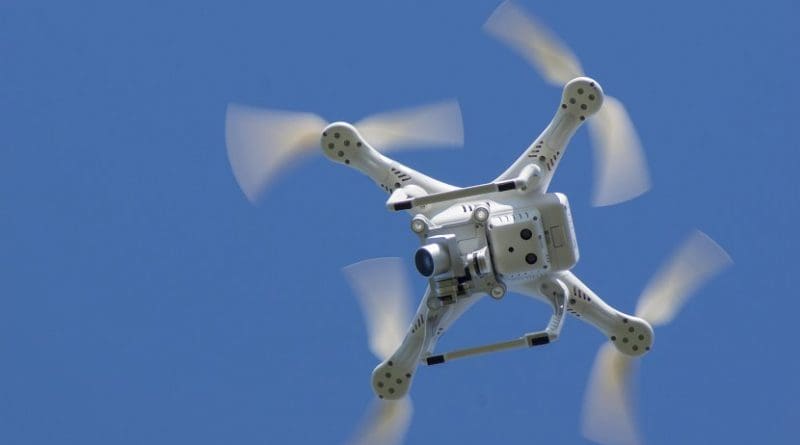Off-The-Shelf Drones Complicating Global Security Landscape – Analysis
The attempted assassination of Venezuelan President Nicolas Maduro during a military parade on Saturday shows the ease of use of drones and their ability to cause confusion and influence politics. The effect, shown by Venezuelan television, was immediate and had a profound impact on the country’s political situation. Key questions are being raised about the use of drones as a tactical weapon by terrorists, insurgents or criminals as a growing security problem and threat.
Terrorist use of drones is not new. In the mid-1990s, the Aum Shinrikyo group used a remote-controlled helicopter in an attempt to spray sarin gas in Japan, but the vehicle crashed during testing. In September 2005, Al-Qaeda used a Chinese-made remote-controlled model airplane to conduct a reconnaissance of Pakistani security forces prior to an attack. Also, the same day, a weaponized model airplane was seized by the Pakistan Army in a raid on an Al-Qaeda camp. In August 2014, near Raqqa in northern Syria, Daesh flew a DJI Phantom FC40 quadcopter on a reconnaissance mission of Syrian Army Military Base 93 prior to a ground assault. Imagery from the drone was broadcast via a Daesh propaganda video on YouTube.
The evolution of drone use is now entering a new phase. With the introduction of off-the-shelf technologies, the use of drones to increase battlefield awareness and achieve tactical objectives is on the rise.
Off-the-shelf drones are now being weaponized and are complicating the global security landscape. Technology that was once only in the hands of governments is now sold directly to the customer. Daesh formally announced its drone program in January 2017 on an online media channel. Its drone operations focused mainly on the reconnaissance of Iraqi and Kurdish forces but, during the battle for Mosul, it dropped explosives from drones on Iraqi troops. By using commercial drone technology, violent non-state actors are able to deliver sharp kinetic messages. Thanks to these extremist groups, the use of off-the-shelf drone technology as a weapon of violence and political statement is here to stay.
There is no doubt that drones are a disruptive technology because they pose a new form of threat against both hard and soft targets. The evolution of drone technology allows for greater use of lighter and more compact unmanned aerial vehicles that can be transformed into overhead cameras or given the ability to drop bomblets. Importantly, there has been a proliferation of the knowledge of how to give commercial drones military uses via inexpensive means. To be sure, easily available technology will make weaponized drone use more popular simply because of the ease of access to the knowledge required to make such a device. For violent groups or individuals, the creation of “small autonomous cells” and “individual terrorism” is augmented by the digital revolution, which makes a terrorist or criminal drone strike possible on a more regular basis.
Drones can be easily purchased online or from numerous hobby or electronics stores. Multiple models are available and can be utilized by an adversary with little knowledge or training required. The advancements in radio-controlled devices, GPS, video, flight duration times, controllability and damage resistance all make current drones more reliable than previous versions over the years. Although most hobby drones can carry around 5 to 10 pounds of weight, payload weights of 25 to 30 pounds on small commercial drones are now common, and with operating times of up to 30 minutes.
Importantly, penetrating the layers of air defense around an individual or a fixed location is now the goal of hostile actors. But there are solutions — active measures using electronic and/or physical interdiction including jammers, electromagnetic pulses, lasers, and additional physical security are capable of interrupting drone operations. Radio frequency sensors constantly search a wide frequency band and classify and decode signals, so users get early warnings, often before drones are even in the air. There is a capability to recognize specific drone radio signatures so that a large number of drones can now be identified according to their manufacturers and even individual models. The Drone Detection Radar, direct digital synthesis sweep and dedicated software can build a useful suite of tools to counter the illicit use of drones for criminal purposes.
There are also manned portable drone jamming systems that use a radio beam between a UAV and the operator that overtakes the drone’s command system in a point-and-shoot fashion. This system is deployed in the Levant.
Overall, drones offer the non-state actor — terrorists, insurgents, criminals, warlords, militias, paramilitaries, mercenaries and pirates — a real-world capability that gives them an advantage, as they can utilize such low-tech solutions directly from their mobile phones. Defending against such attacks is now an immediate concern and the technology to counter drone attacks must be put in place.

